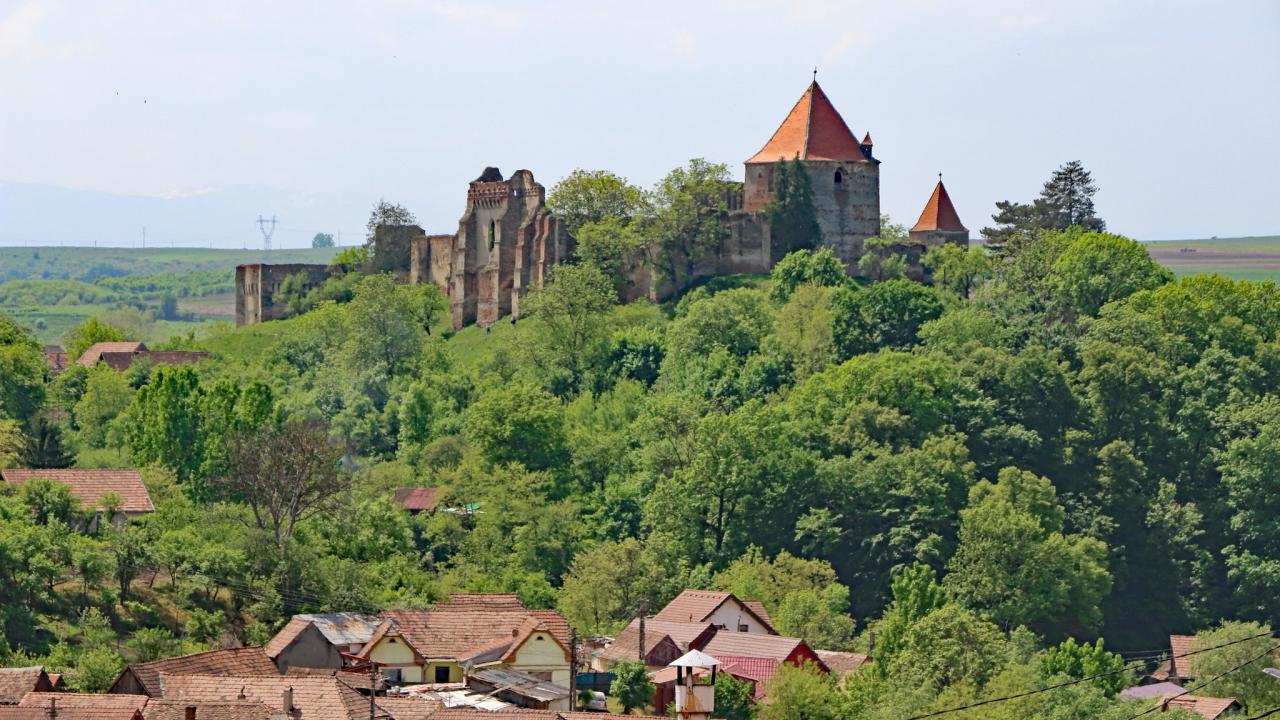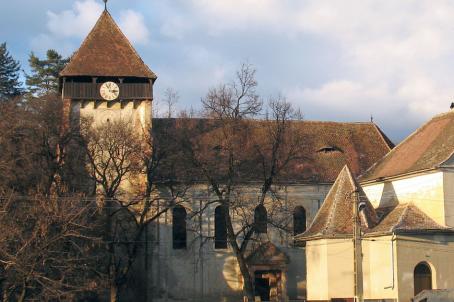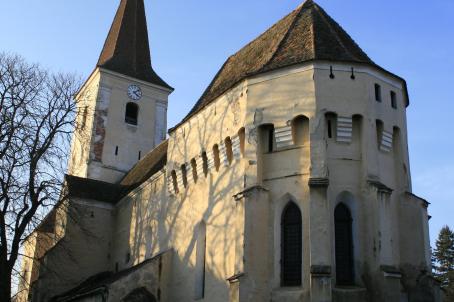Slimnic Fortified Church

Erected in the 14th century on the northern borderline of the Royal land, the castle was, due to its strategic position, an outpost of Sibiu and secured the main road to Mediaş. The oldest part of the mighty fortification is the bell tower with three levels, boasting a Gothic chapel on its ground floor. The western wall of the castle with crenels and loopholes was built in the 15th century. On the precincts the construction of a Gothic church was started, but most probably it was never completed. Still preserved are the southern wall of the main nave and the ogival arches to the side aisle. The machicoulis on the western wall of the church prove that the attic should have been used as defence platform. The entrance to the castle leads through a tunnel in the north-eastern side of the assembly and further on a tower opens access to the fountain’s outer bailey, an oval precinct partially collapsed in 1872.
The villager’s fortress was conquered in 1529 and 1706 and the attacks mainly destroyed a second ring wall, which also surrounded the parish church built in the 14th century. The interior space covered with ribbed lierne vault it is endowed with valuable 16th century Baroque pieces, as the altar from 1773, the pulpit, the pews, the font and the organ.
The villager’s fortress was left deserted in 1719 when the plague stroke and in the 19th century it was used as a source of material for other buildings of the community.
About this building
For more information visit on this building visit https://kirchenburgen.org/en/location/stolzenburg-slimnic/





